Branded as Redmi, Xiaomi’s latest tablet is simply called the Redmi Pad. Focusing on the basics, the tablet strikes a good balance between the main components – a high refresh rate display, a sensible chipset choice, a large battery, and useful cameras. But are there any pitfalls? Let’s take a look at this review.
Specifications
- Display: 10.61″ IPS, 2000×1200 pixels, 90Hz, 400nits
- Processor: MediaTek Helio G99, 6nm, 2x 2.2GHz (Cortex-A76) + 6x 2.0GHz (Cortex-A55), Mali-G57 MC2.
- RAM: 3, 4 or 6 GB.
- User Memory: 64 or 128 GB.
- Main camera: 8 MP (f / 2.0, autofocus).
- Front camera: 8 MP (f / 2.3, viewing angle 105 °).
- Battery: 8000 mAh, 18 W.
- Preinstalled operating system: Android 12, MIUI 13.
- Dimensions: 250.5 × 158.1 × 7.1 mm.
- Weight: 465 grams.
Design
The 10.6-inch display, 5:3 aspect ratio, and the corresponding size and weight figures make the Redmi Pad the average size on the market. However, this is not bad – rather, Xiaomi deliberately makes the tablet the most versatile.
The body of Redmi Pad is made of aluminum, its matte finish perfectly protects against fingerprints. Flat sides and sharp, well-defined edges give the device an attractive appearance. The camera bump, enlarged without any apparent hardware need, looks well-proportioned and stylish. The main Redmi badge on the opposite end is large enough to serve as brand recognition without being too conspicuous, and the regulatory markings at this size all but disappear.
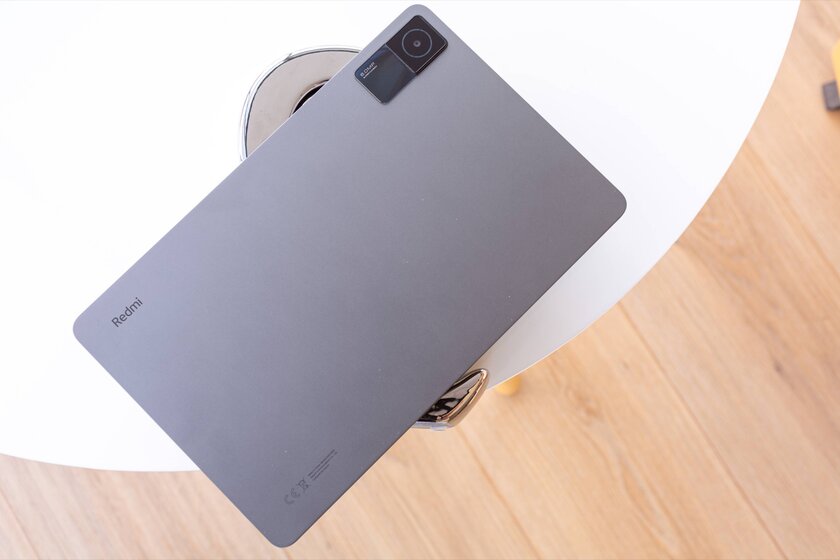
On the front side, the uniform bezel around the display doesn’t spoil the impression of a well-designed device, and also provides ample holding area without looking too bulky.
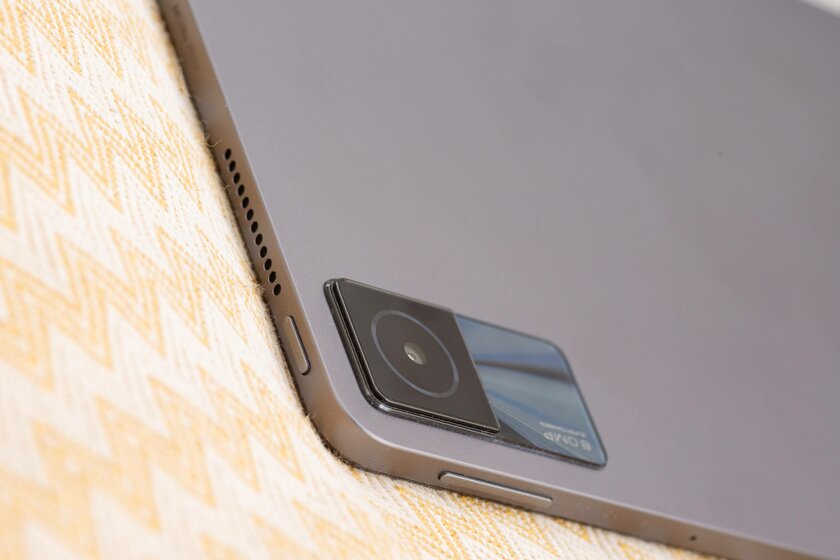
The physical controls are located on the top left (when holding the tablet in landscape orientation) – the power button is on the left and the volume rocker is on the top. In general, working with Redmi Pad is pleasant. The build quality and finish are quite good (at the level of devices twice as expensive), and the size and proportions can be called ideal.
Display
The Redmi Pad has a 10.61-inch IPS display (why they haven’t rounded it to 10.6 inches is anyone’s guess). The aspect ratio is 5:3 (it seems to be the newfangled “standard”), and the resolution is 1200 × 2000 pixels at a density of 220 dpi. Most importantly, the display has a maximum refresh rate of 90Hz, a rare and highly desirable option at this price point.
Officially, Xiaomi promises 400 nits of brightness, and our measurements confirmed this claim almost exactly. The contrast ratio is just over 1500:1, which is the average value for this class. Worth noting is the viewing angles – this is one of the best panels in this regard, we did not notice any changes in contrast when looking at the screen at an angle.
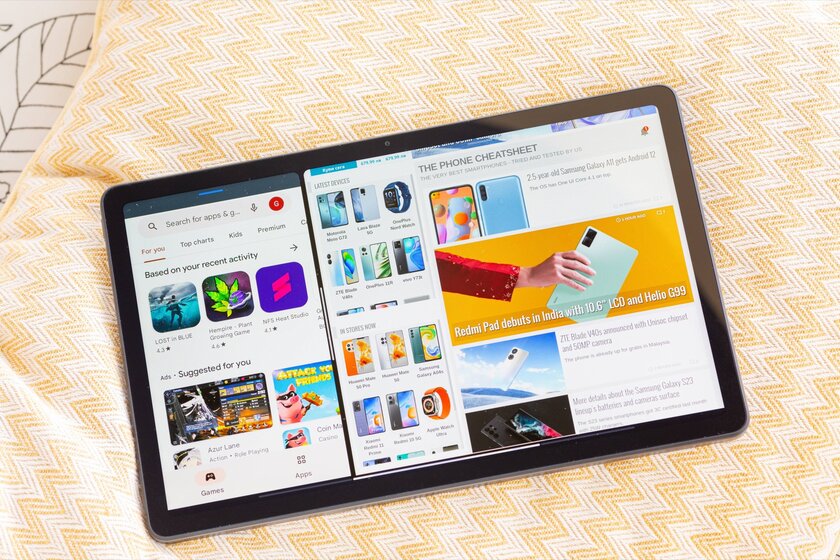
The Vivid (default) and Vivid modes are decidedly cool, but the Standard mode holds back the blueshift and is accurate enough for sRGB content. There is also a color temperature wheel that allows you to adjust the color reproduction to your liking.
Screen refresh rate settings allow you to select a static 60Hz or a dynamic 60-90Hz. When the latter is activated, the frequency of 90 Hz will be provided when you touch the tablet or, for example, if the content moves in the browser – when idle or displaying static content, it will be reset to 60 Hz. High frame rate gaming is also possible – we tried Alto’s Odyssey and the screen supported a 90Hz refresh rate (Game Turbo showed between 72 and 90 fps).
autonomy
Redmi Pad is powered by an 8,000 mAh battery, which allows us to talk about rather high endurance performance. We recorded 15:46 hours of web browsing and 13:40 hours of video viewing. Among the recently tested devices in this class, only the Realme Pad X is marginally better, while the OPPO Pad Air and HONOR Pad 8 are no match for the Redmi Pad in terms of autonomy.
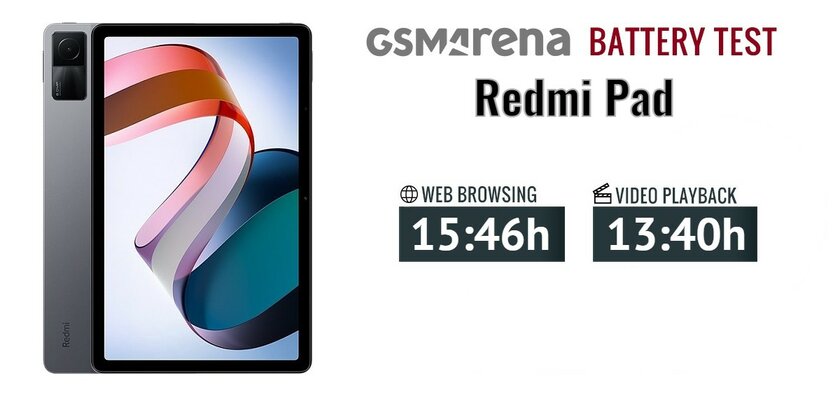
The charging speed of tablets has never been great, and the reason for this is largely due to large batteries. In this context, the results of Redmi Pad are more or less average. In our testing with the included 22.5W adapter, a full plug-in charge took 2:21 hours, and 30 minutes into the process we had a 25% charge.
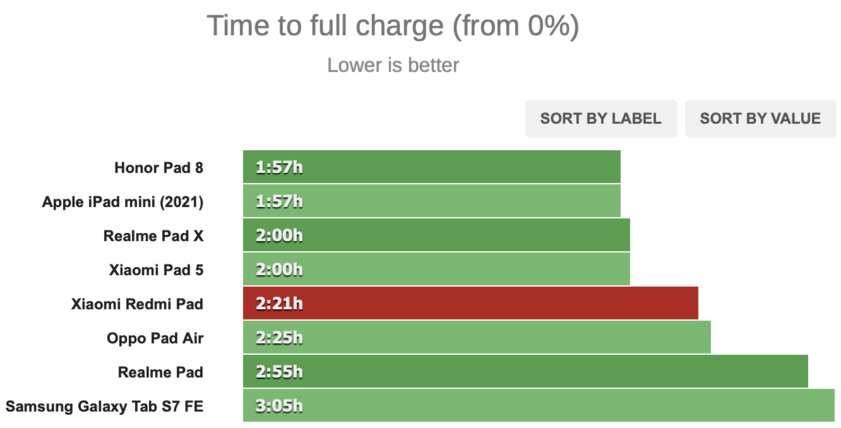
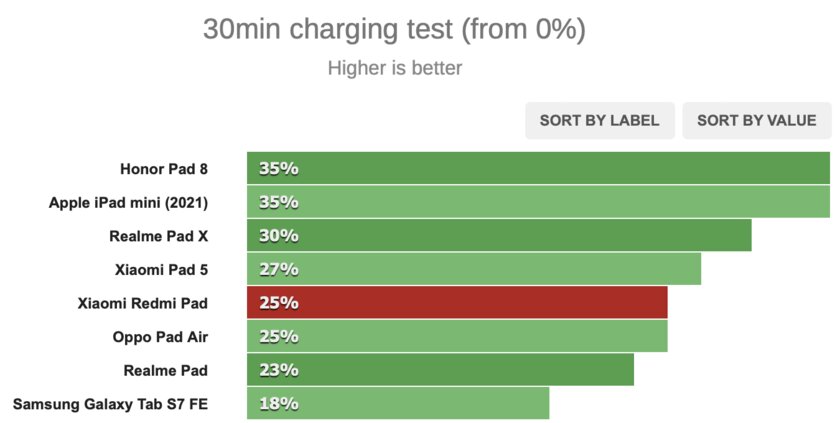
Speakers
Redmi Pad is equipped with a sound system of four speakers, two on each side – of course, they are symmetrical and reproduce stereo sound.
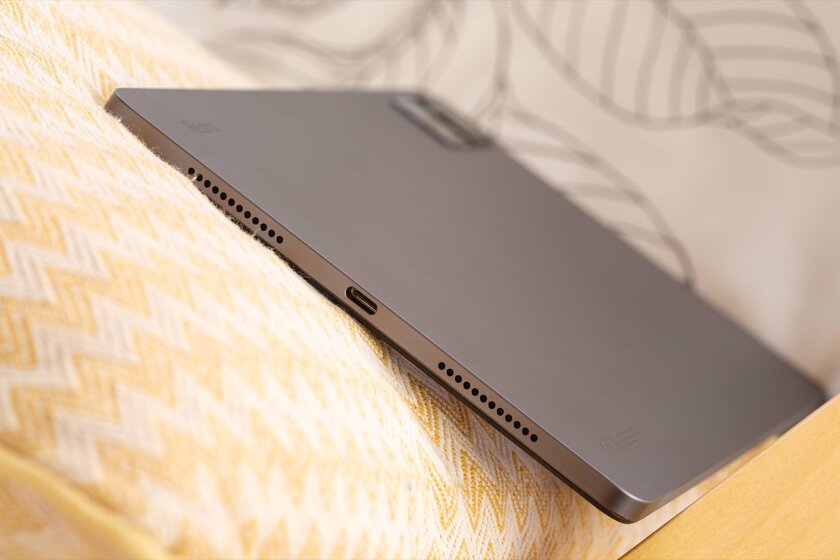
According to the results of testing the sound, we characterize it as very good in terms of volume. In terms of sound quality, there is little to complain about – although it falls short of the same HONOR Pad 8 at low frequencies, the Redmi tablet still has a solid low-frequency sound and delivers clear vocals and high frequencies.

Firmware
The Redmi Pad runs MIUI 13 on top of Android 12, a familiar combination we’ve seen on recent Xiaomi phones and the tablet-like Mix Fold 2. Xiaomi has promised 2 system updates for the Redmi Pad (it should get MIUI 15 in 2024, presumably along with Android 14). ), as well as three years of security patches.
The firmware has specific moments created for tablets. For example, the split-screen user interface in apps like Settings, Notes, and File Manager.
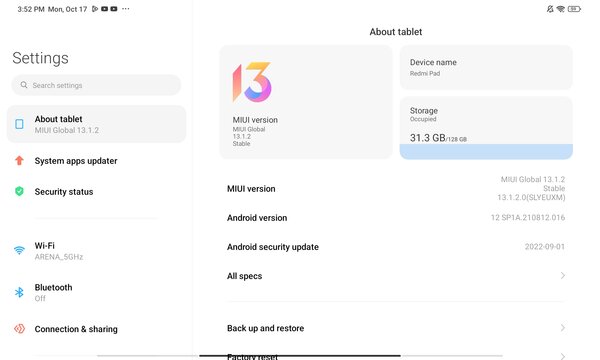
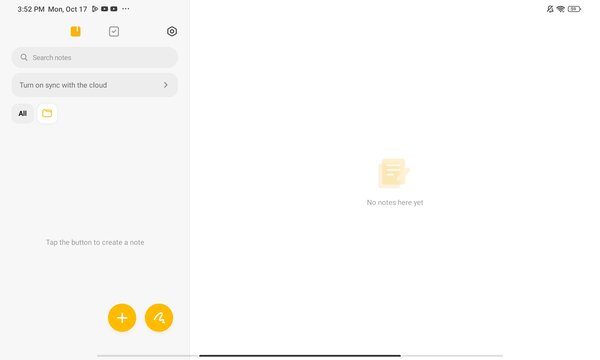
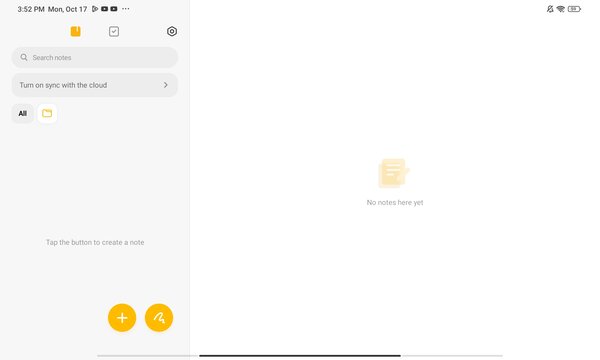
Multi-window functionality, however, is not much different from what is implemented in Xiaomi smartphones, and it is not the best. You do get split screen mode, but you’re only limited to 50/50 or 33/67 – you can’t do any other split manually.
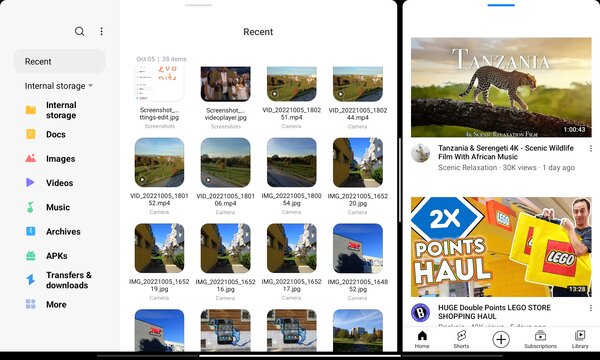
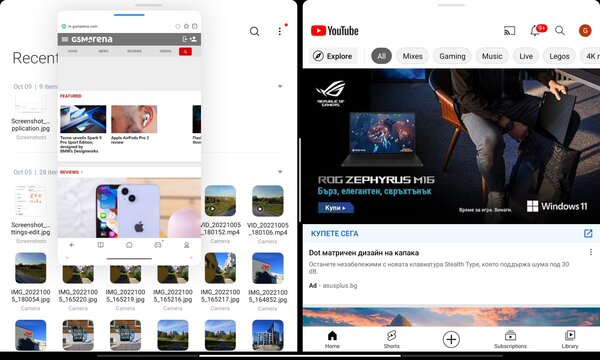
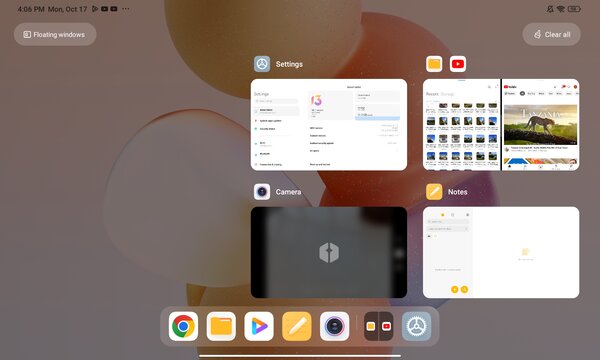
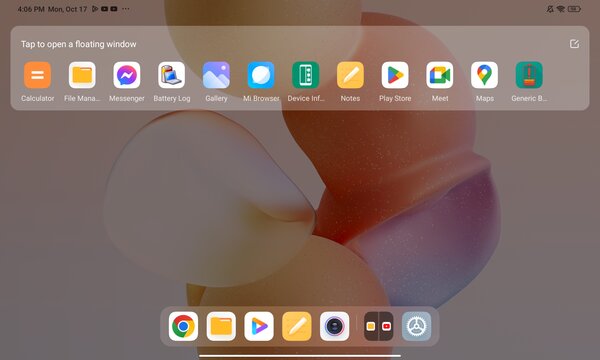
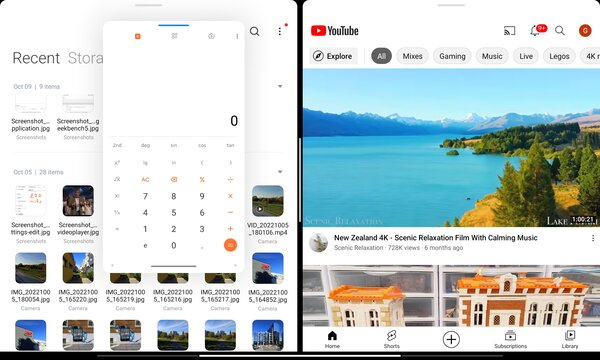
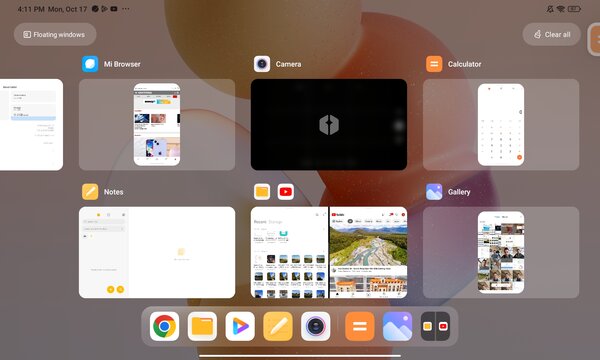
There is also a floating window function, but it is only available in one – other manufacturers have several of them and with a separate task switcher, while here floating windows fall into the main task switcher.
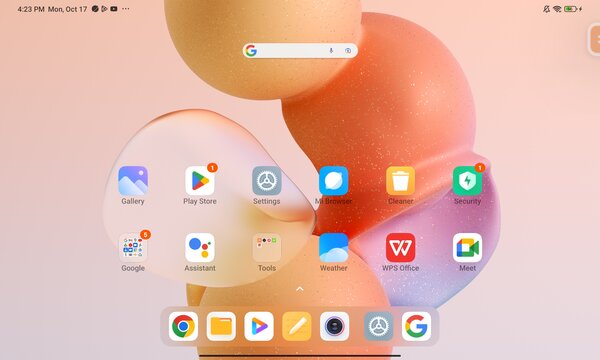
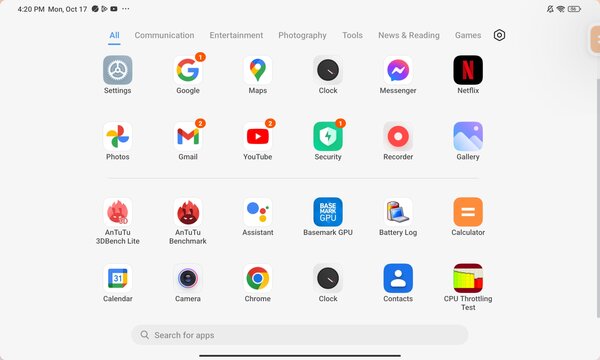

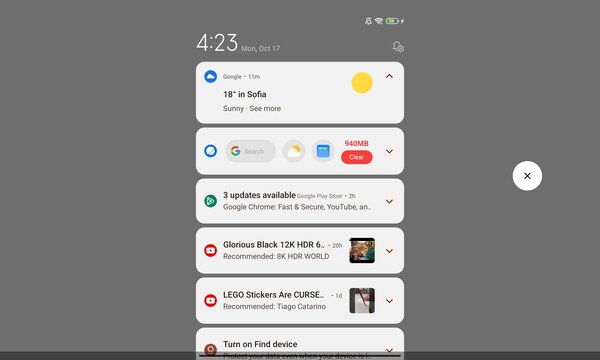
To sum it up, MIUI 13 on the Redmi Pad looks and feels the same as the ROM on smartphones, although other skins are often more optimized for the big screen. That may not be a problem, though – if you only need a large-screen device to watch YouTube, then perhaps the extra features aren’t all that important. But perhaps the developers could implement at least a side view of the control center and notifications.
Performance
Redmi Pad is powered by Helio G99 platform. This is a 6nm chip from Mediatek with a 2+6 core configuration and Mali-G57 MC2 graphics. The base version has 3GB of RAM and 64GB of storage. User memory can be expanded with microSD, but 3GB of RAM sounds like a limitation these days. Obviously, you should prefer the options for 4/128 GB and 6/128 GB (in our review, there was a modification with 4/128 GB).
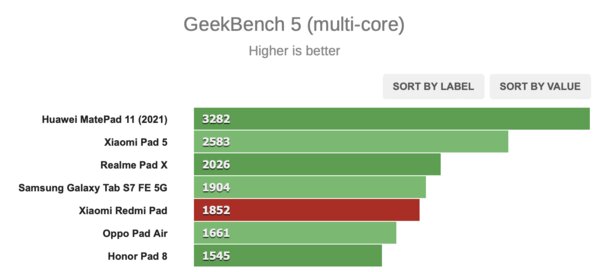
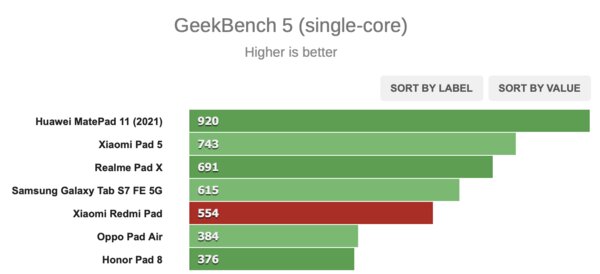
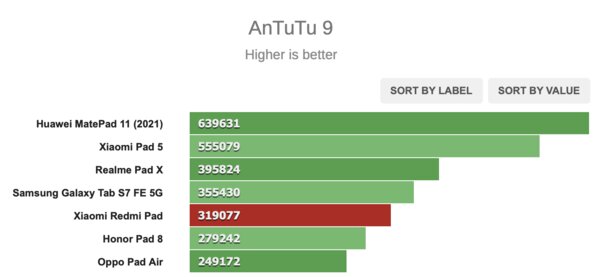
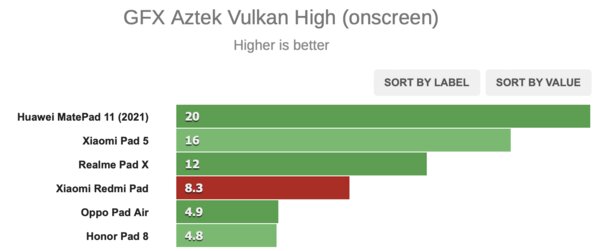
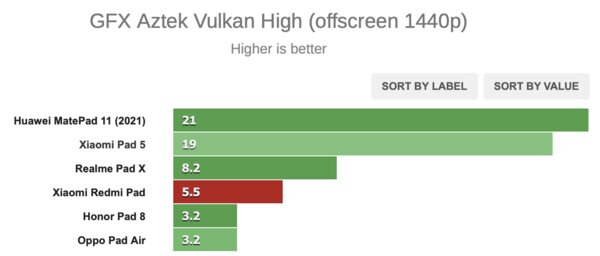
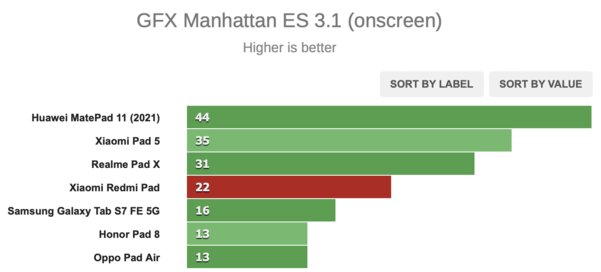
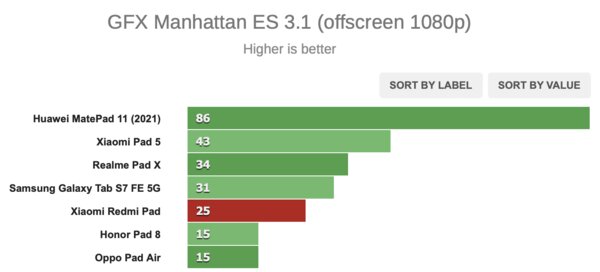
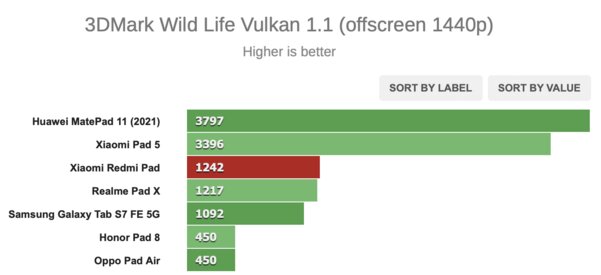
The Redmi Pad isn’t far from the top of the benchmarks, but it’s not at the bottom either. Of course, the same Xiaomi Pad 5 with a Snapdragon 860 processor is in a completely different league and wins in all respects. But the Redmi Pad is a notable step up from competitors that use the Snapdragon 680 (like the OPPO Pad Air and HONOR Pad 8).
cameras
Redmi Pad is equipped with a pair of 8-megapixel cameras – one on the back, the other on the front. The rear camera uses a GalaxyCore GC08A3 sensor (1/4″ sensor, 1.12µm pixels) paired with a 26mm-equivalent lens with f/2.0 aperture as well as autofocus.
The front camera has an SK Hynix Hi-846 (1/4″, 1.12 µm) sensor with an unusually wide field of view – Xiaomi’s specs say the lens has a field of view of 105 degrees (corresponding to about 17mm), though some hardware applications report 100 degrees and 18mm anyway, that’s wider than most selfie cameras in not only tablets but also smartphones.
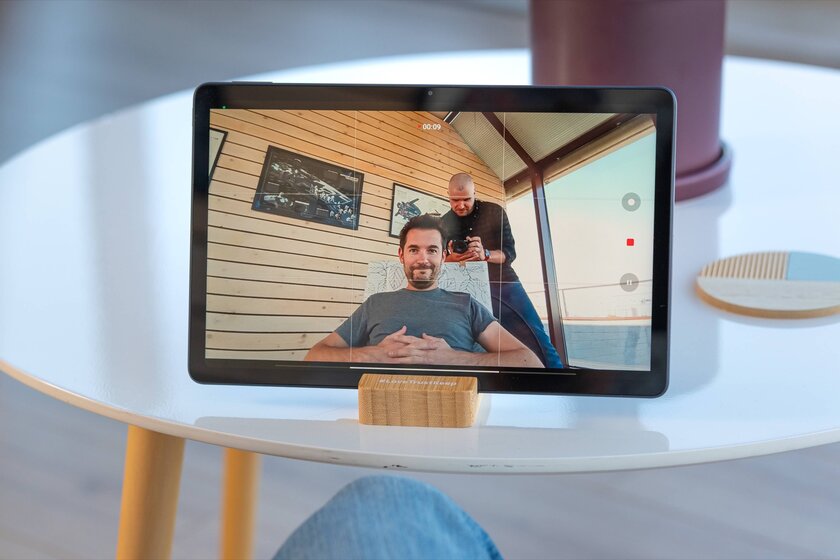
Both cameras support 1080p video recording at 30 frames per second; There is no video stabilization in any of them.
Photos from the rear camera are very good for their class. We get crisp images with about the amount of detail you’d expect from 8-megapixel shots. The contrast is good, the dynamic range is decent, the color reproduction is also pleasant.
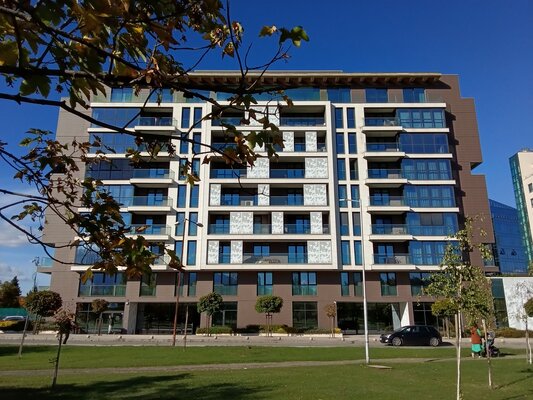
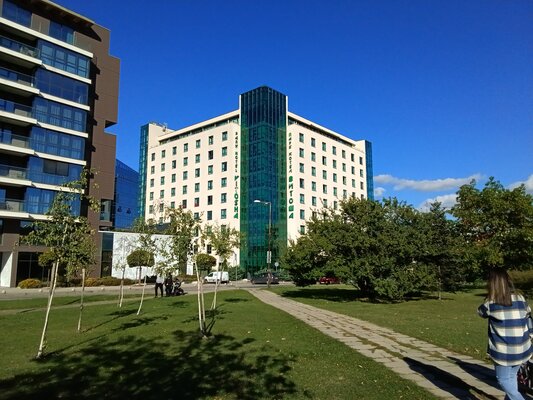

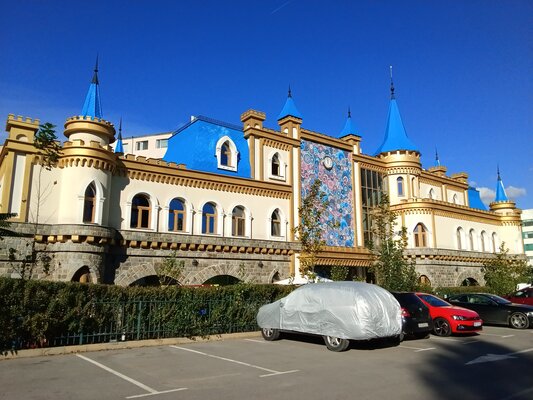
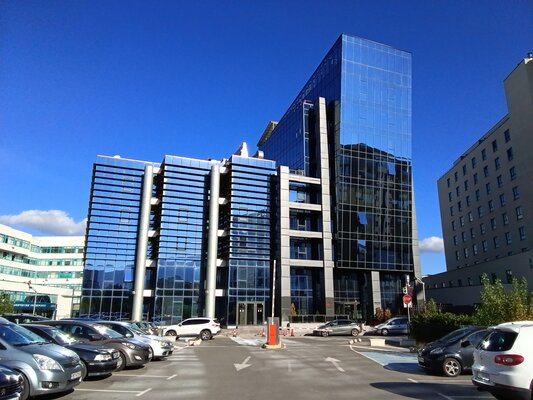


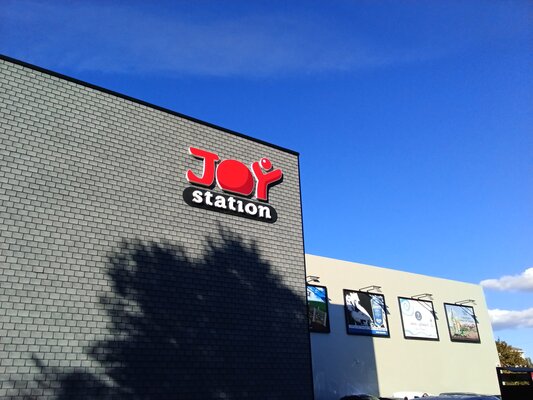
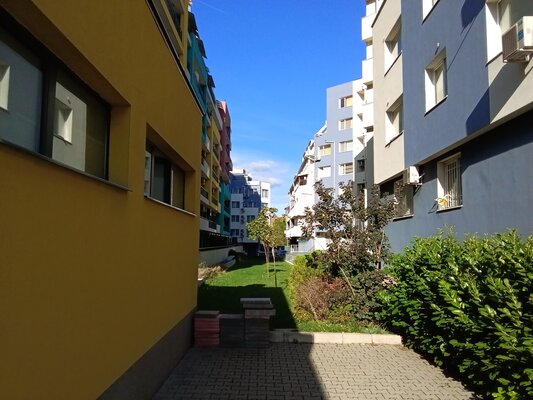
The ultra-wide-angle selfies are certainly a nice touch, although the sharpness at arm’s length isn’t great.


Review
With the exception of a somewhat limited implementation of multi-window in the firmware (and let’s face it, not everyone even pays attention to this), we can hardly name any obvious problems with the Redmi Pad. The only thing is to avoid the base 3/64 GB version (it does not support multi-window at all, mind you), but we see no reason not to recommend other models (4/128 GB or 6/128 GB).

This tablet has one of the best displays you can get for the money – it’s as bright as others in this price range, but doesn’t have annoying contrast issues, and its 90Hz support elevates it from its 60Hz competitors. The battery life is at the top of its class, the speakers are very good too. The metal body gives it a premium feel. All in all, the Redmi Pad is one of the nicer bundles if you’re looking for a mid-range tablet.
pros
- High refresh rate display, very good overall performance for its class.
- Looks and feels premium.
- Long battery life.
- Loud and high quality sound system.
- microSD slot
Minuses
- Minimal multi-window functionality, the entry-level version with 3 GB of RAM does not have it at all.
Source: Trash Box
I am Joyce Corbett and I have been working in the news industry for over 10 years. My current role is as an author at World Stock Market, where I focus primarily on the tech section. My specialty is creating engaging content that helps to explain and demystify complex financial topics.







